Metricon denies collapse as fears for Aussie builders intensify
Australia’s biggest builder has been forced to deny claims it’s in financial trouble, but experts warn construction industry collapses are “accelerating”.
Companies
Don't miss out on the headlines from Companies. Followed categories will be added to My News.
Australia’s biggest home builder Metricon has denied it is on the verge of collapse – so far avoiding the fate other major builders have fallen victim to — and declaring the business is “strong” as it works on a pipeline of 4000 houses across Australia.
But experts have warned many businesses in the construction industry are facing not having “enough money” to continue in coming months.
Two major Australian construction companies including Gold Coast-based Condev and industry giant Probuild have already gone into liquidation this year.
Smaller operators like Hotondo Homes Hobart and Perth firms Home Innovation Builders and New Sensation Homes, as well as Sydney-based firm Next have also collapsed, leaving homeowners out of pocket and with unfinished houses.
Metricon, which was founded in 1976 and employs 2500 staff across Australia’s eastern seaboard, has been hit with intense speculation that it was facing financial strife.
But acting CEO Peter Langfelder declared it was “business as usual” in a press conference on a building site on Thursday, although he admitted the company was experiencing some delays on projects.
Earlier this week, the company experienced an emotional time as it announced co-founder and CEO Mario Biasin died unexpectedly at the age of 71.

Collapses to continue
Despite the announcement by Metricon, insolvency expert Andrew Spring of Jirsch Sutherland said overall the challenges for the construction industry are compounding with rising labour costs, high demand for materials which are in short supply, fixed price contracts and now rising interest rates.
“I think what we are seeing is the impact of the accumulation of these issues over the course of last 12 to 18 months coming home to roost,” he told news.com.au.
“If we think that during that period of high demand the businesses have been able to build up some reserve or working capital reserves.
“As those contracts are ultimately in the red or loss-making and they erode reserves, you’ve suddenly got a scenario that funding the next job becomes harder due to the loss from the last job and it’s a downward spiral that in some point of time there’s not enough money to go around. That’s what I would anticipate seeing more frequently over the next 12 to 24 months.”
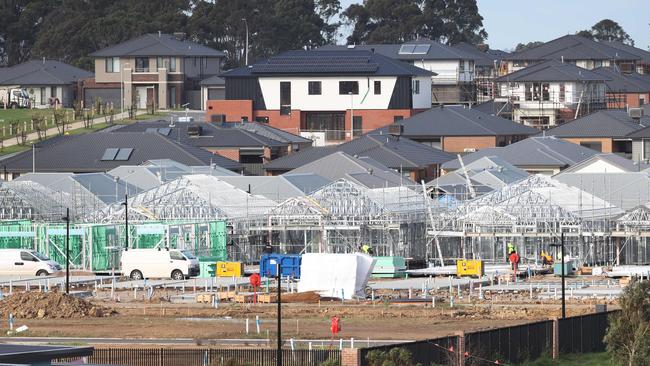
Mr Spring said he had been hearing anecdotally that builders were moving to renegotiate fixed price contracts, “but it’s more ad hoc rather than systematic to help deal with this continuing concern”.
Overall, there were more businesses asking for help, he added.
“We have seen our fair share of people in the construction industry that are asking what options are available in the event that they do need to make a call on insolvency,” he said.
“We will definitely continue to see a rise in insolvency in the coming months and broader challenges in next 12 months in the economy.”
For consumers, Mr Spring advised them to carefully consider entering into contracts and the possibility that costs could rise.
“The majority of people who are entering into building works contracts are likely financing in some way and the banks are going to consider the value of the asset they are lending against,” he said.
“If the price of the contract continues to increase and the asset is not going to continue to increase, it’s going to impact the ability to finance the project for a consumer. We may see this particularly as the housing market continues not to rise at the same rate and the asset may not be able to absorb that increased cost.”
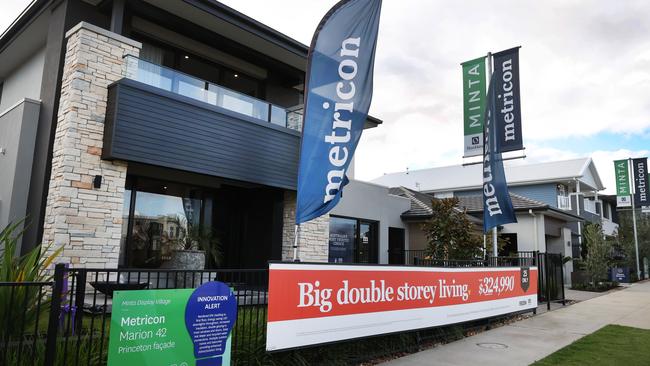
Construction boom and bust
The building industry has reaped the benefits of the Federal Government’s home builder program with demand for work skyrocketing.
But the industry has also been hit with rising costs, disrupted supply chains and lockdowns making many projects financially unviable.
Metricon doubled the numbers of builds it completed in Queensland alone in 2020-21, compared to the previous year where it notched up 668.
The industry giant had 6052 homes under construction in 2020-21.
This financial year, it has already undertaken 1006 construction jobs worth $400 million in Queensland alone, according to Queensland Building and Construction Commission records.
It also has $195 million worth of state building contracts on the go in Victoria, which includes a project under its Everyone division to build 115 homes for its Social Housing Pipeline Project, which was due for completion last year.
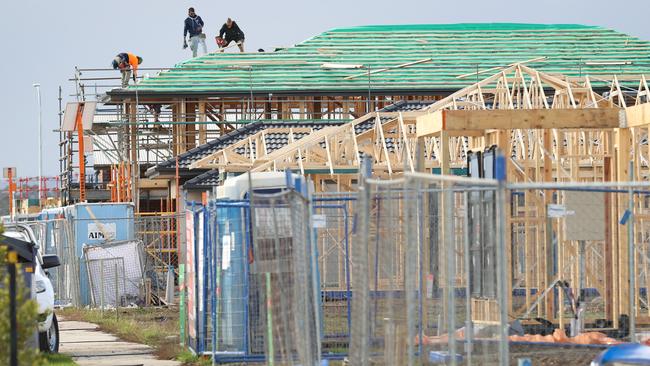
The $2.6 billion pipeline project was expanded by the Victorian Government in March to add 913 homes, although it’s unclear it Metricon is involved.
Metricon is also involved in building public housing for the Queensland and New South Wales state governments.
NSW couple Jessica Snowdon and her husband Steve, who have six kids, paid $31,500 in an initial deposit to Metricon just four weeks ago and were “freaking out” amid fears for the company’s future.

But Mr Langfelder hosed down fears.
“We’ve got a strong history of performance, all our contracts in place are profitable, we’re completely up to date with all our trades, our suppliers, our employees, commissions, everything is completely up to date,” he said.
Metricon sales staff within the company were being instructed to increase cash flow by securing more deposits, the Herald Sun reported on Wednesday, but Mr Langfelder has also denied the claims.
Les Williams, who formed and heads advocacy group Subcontractors Alliance, runs his own business WK Civil, which lost $800,000 alone from a builder’s collapse back in 2013.
He said reports that salespeople were allegedly being asked to get deposits from prospective clients was concerning.
“There should be more frequent checks on these builders’ viability by authorities,” he said

No way out of the crisis
A building insider, who works for one of the largest construction companies in NSW, had previously warned news.com.au the situation in the industry was only “going to get worse” after a string of collapses in the sector, as the price of building homes blows out between $40,000 and $100,000.
Mark* said he couldn’t comment on the Metricon situation, but said the construction industry was facing a crisis as the pressures on the sector were impossible to fix right now.
“There’s no solution at the moment. The cost of materials and labour continues to rise and Australian manufacturers are continuing to price gouge builders,” he told news.com.au on Thursday.
“Every day we are being forced to sit down with a supplier or contractor and discuss another price increase effective immediately, with mention of more to come.
“I can’t see it slowing, the wet weather is not helping again, it’s killing cash flow and it’s going to send businesses broke.”
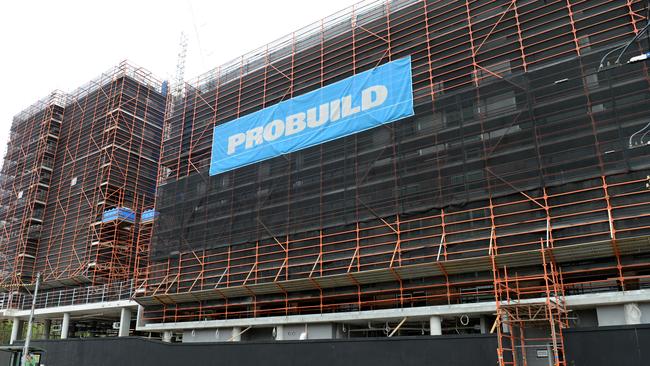
Insolvency ‘accelerating’
Construction insolvencies were 28 per cent higher in March compared to last year in Australia, while the first quarter of 2022 has seen 270 construction companies falling into liquidation, according to credit reporting agency Equifax.
Alarm bells have also been sounded that established players are particularly being impacted.
Construction companies that have been operating for five to 19 years make up more than 50 per cent of all construction insolvencies since the second quarter of 2021, Equifax found.
Scott Mason, general manager of commercial and property services at Equifax, said building companies are also being hit by creditors and lenders becoming “more aggressive” post Covid with debt collection, alongside subsidies that helped prop up the industry ending.
“We have seen an increase in insolvencies in the construction sector over the last three or four months. It appears to be accelerating however,” he said.
“The total number of insolvencies from construction used to represent 22 per cent on average per month and now over last four or five months its up at the 30 per cent mark, so the percentage of overall insolvencies in construction is increasing.”
A healthy construction industry is vital to a strong economy and ongoing growth, with the sector accounting for the employment of almost 9 per cent of Australian workers and 7.5 per cent of Australia’s GDP, according to reporting bureau CreditorWatch.
“A crisis in the construction industry has the potential to flow through to wider industries,” said CreditorWatch chief economist Anneke Thompson.
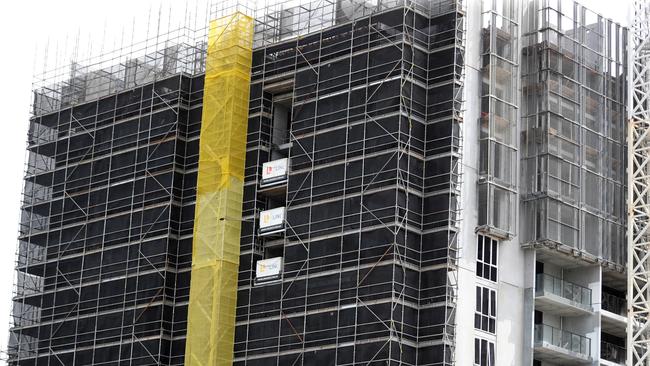
Tradies remain unprotected
The Federal Government announced a national review of Security of Payment laws in the building and construction industry, with John Murray delivering his findings in May 2018.
It recommended uniform laws across the country to ensure subcontractors and tradies are paid on time, especially if major construction firms go under.
But nothing has changed since the report was released with different state approaches adopted under a hotchpotch of current security payment laws.
Given the construction industry’s current woes, Mr Williams said it was a good time for changes to be made.
“They were recommendations from a review commissioned by the current Federal Government, but ignored,” he said.

Nick Xenophon, who is running again for election in the Senate, has been campaigning on the issue.
He said whenever a builder becomes insolvent, the subcontractors who have not been paid for the work they have carried out and for the materials supplied, “suffer extreme financial stress”.
Yet four years since the federal government review, nothing had been done, despite the building and construction industry having the highest incidence of insolvency, he added.
“[The] building industry crisis with Metricon in trouble highlights the need for federal security of payments laws. I’ve been calling for this reform for years,” he wrote on Twitter.
“Current system a shambles, will leave thousands of subbies in the lurch, with untold grief for those building their homes.”
Originally published as Metricon denies collapse as fears for Aussie builders intensify





